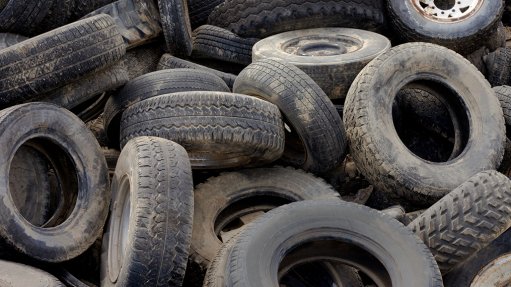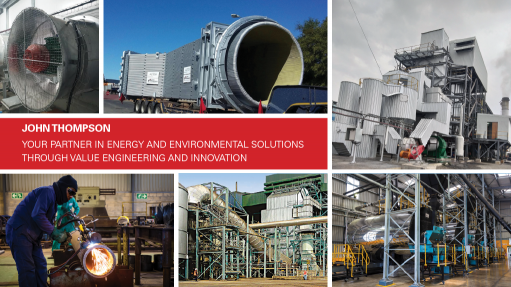Unlocking grid immediately through curtailment a priority, Cassim confirms
Eskom interim CEO Calib Cassim has described unlocking grid connection capacity, using curtailment, as an urgent priority while Eskom and other stakeholders assess funding options to expand the transmission network.
Speaking at a climate conference in Johannesburg, Cassim reported that discussions were under way on how to ensure that more renewable-energy independent power producers (IPPs) were connected to the grid ahead of the large-scale grid-related investment that was being planned.
“While we are still going to take a number of years to expand the grid, we need to connect these megawatts.
“There may be a portion of the year when those renewables IPPs will be curtailed.
“Let’s manage that cost – it's a relatively small number – and not wait for a perfect solution,” he said at the event, which was jointly hosted by Standard Bank and SOAS University of London.
A recent assessment by Eskom and two European transmission system operators – 50Hertz of Germany and Elia of Belgium – showed that the capacity of the existing Western Cape grid to host variable renewable generators could be doubled under a scenario where no more than 10% curtailment was implemented.
Curtailment involves the active reduction of output from wind and solar plants in response to system security needs or temporary transmission capacity constraints and is widely used by system operators to facilitate the introduction of renewable generators in a context of grid constraints.
The analysis indicated that 4 GW of additional renewables capacity could be connected to the Western Cape grid “almost immediately” and that more than 90% of the electricity that these plants would produce could be safely integrated into the grid.
Curtailment of up to 10% also offered more economic value than new investments, primarily where wind technology is the source of the variable renewable electricity. It also showed that solar typically paired better with batteries than curtailment, because, unlike wind, all solar plants would generally be producing at the same time.
Both Eskom and the IPP Office have confirmed previously that they were assessing a new approach to curtailment to allow for additional generation capacity to be built at points on the grid that had previously been shown as fully committed.
Had such rules been in place ahead of the sixth bidding round of South Africa’s public renewables procurement programme, it would have been possible to contract for 3 200 MW of new wind projects in the Western, Eastern and Northern Cape. In the event, no wind projects advanced to preferred-bidder status, owing to claims by Eskom that the grid capacity on which the projects were premised had been absorbed.
It is understood that the curtailment framework could be released ahead of the next public procurement round, which was initially scheduled to proceed in September.
The framework could be unveiled once the updated Generation Connection Capacity Assessment is released; a document which is reportedly undergoing internal Eskom governance processes.
Meanwhile, Cassim also said that Eskom, which is currently being restructured into transmission, distribution, and generation entities, should be “open minded” about future funding options for the grid itself, which could include private sector participation. It is estimated that some R230-billion of investment will be needed by 2032 to add 14 000 km of transmission lines, as well as associated transformation capacity.
However, he stressed that there was also an urgent need for investment in distribution infrastructure and for a national conversation on the future structure of the sector, which is highly fragmented with many of the country’s more than 250 municipalities holding distribution licences.
“There are a number of smaller distributors and municipalities that are not investing and if you want to deal with the security or supply and access, we can't ignore that element of the value chain,” he concluded.
Article Enquiry
Email Article
Save Article
Feedback
To advertise email advertising@creamermedia.co.za or click here
Comments
Research Reports
Projects
Latest Multimedia
Latest News
Showroom
Sweet-Orr, established in 1871, is a global leader in superior protective workwear, known for quality, innovation, and performance.
VISIT SHOWROOMJohn Thompson, the leader in energy and environmental solutions through value engineering and innovation, provides the following: design, engineer,...
VISIT SHOWROOMAnnouncements
What's On
Subscribe to improve your user experience...
Option 1 (equivalent of R125 a month):
Receive a weekly copy of Creamer Media's Engineering News & Mining Weekly magazine
(print copy for those in South Africa and e-magazine for those outside of South Africa)
Receive daily email newsletters
Access to full search results
Access archive of magazine back copies
Access to Projects in Progress
Access to ONE Research Report of your choice in PDF format
Option 2 (equivalent of R375 a month):
All benefits from Option 1
PLUS
Access to Creamer Media's Research Channel Africa for ALL Research Reports, in PDF format, on various industrial and mining sectors
including Electricity; Water; Energy Transition; Hydrogen; Roads, Rail and Ports; Coal; Gold; Platinum; Battery Metals; etc.
Already a subscriber?
Forgotten your password?
Receive weekly copy of Creamer Media's Engineering News & Mining Weekly magazine (print copy for those in South Africa and e-magazine for those outside of South Africa)
➕
Recieve daily email newsletters
➕
Access to full search results
➕
Access archive of magazine back copies
➕
Access to Projects in Progress
➕
Access to ONE Research Report of your choice in PDF format
RESEARCH CHANNEL AFRICA
R4500 (equivalent of R375 a month)
SUBSCRIBEAll benefits from Option 1
➕
Access to Creamer Media's Research Channel Africa for ALL Research Reports on various industrial and mining sectors, in PDF format, including on:
Electricity
➕
Water
➕
Energy Transition
➕
Hydrogen
➕
Roads, Rail and Ports
➕
Coal
➕
Gold
➕
Platinum
➕
Battery Metals
➕
etc.
Receive all benefits from Option 1 or Option 2 delivered to numerous people at your company
➕
Multiple User names and Passwords for simultaneous log-ins
➕
Intranet integration access to all in your organisation





















